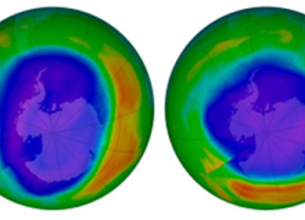TOXIC AIR: THE PRICE OF FOSSIL FUELS
17, Feb 2020

Prelims level : Environmental Impact Assessment
Mains level : GS-III Conservation, environmental pollution and Degradation, Environmental Impact Assessment.
Why in News?
- Recently, the Greenpeace Southeast Asia has released a report titled ‘Toxic Air: The Price of Fossil Fuels’.
Key Findings:
- It provides a global assessment of the health impact of air pollution from fossil fuels in 2018 and a first-of-its-kind estimate of the associated economic cost.
- It is limited to the following pollutants, fine particulate matter(PM 2.5), ozone (O3) and nitrogen dioxide (NO2), and only that pollution which is emitted by fossil fuel combustion (coal, oil and gas).
- Health Impacts of Air Pollution:The exposure to an air pollutant or combination of air pollutants, increased incidence of diseases including Ischaemic Heart Disease (IHD), Chronic Obstructive Pulmonary Disease (COPD), lung cancer, lower respiratory infections, type II diabetes, etc.
- Economic Cost of Air Pollution: The burning of fossil fuels costs an estimated 3.3% of global Gross Domestic Product (GDP), equivalent to US $8 billion per day and 12,000 premature deaths every day.China, the US and India bear the highest economic cost of soaring pollution, at an estimated $900 billion, $600 billion and $150 billion (5.4% of the India’s GDP) a year, respectively.
- Impacts ofParticulate Matter (5):It leads to the greatest health impact and the greatest financial cost of the three pollutants (PM2.5, O3, NO2). Globally, air pollution is estimated to cause 4.5 million premature deaths each year, which includes 3 million deaths attributable globally to PM2.5.
- Pollution from PM2.5 costs 2.5% of the global GDP whereas pollution from O3 and NO, each costs equivalent to 0.4% of global GDP.
- Ozone (O3)formed at near-ground level is an air pollutant that causes smog. Ozone pollution causes acute human health problems, including chest pain, throat irritation and inflammation of the airways. It also adversely affects vegetation and crops.
- Nitrogen oxides:When fossil fuels are burned in air, nitrogen oxides (NO and NO2, collectively referred to as NOx) are created from molecular nitrogen in the air and in the fuel that is being burned. NOx pollution, along with sulphur dioxide, which is also produced when fossil fuels are burned, reacts with water to form acid rain, snow and fog, and with other substances to form particulate matter.
India’s Findings:
- One of the principal pollutants in northern Indian cities including DelhiisPM2.5.
- In India there are 9,81,000 preterm births and 2 million preterm births globally due to PM2.5.
- Approximately 3,50,000 new cases of child asthma in India to nitrogen dioxide. As a result of this, over 1.28 million more children in India live with asthma, which is linked to fossil fuel pollution.
- The exposure to fossil fuels also leads to a loss of around 490 million workdays.
Way Forward:
- Creating a sustainable transport system by setting a phase-out date for diesel and petrol cars, while implementing various urban transport measures, such as restricting cars’ access into certain neighbourhoods or districts, promoting car-free days, etc.
- The phase-out of fossil fuels and switch to renewable forms of energy is beneficial both for reducing air pollution and mitigating anthropogenic (man-made) climate change.
- India needs to increase its spending on the health sector. It is to be noted that India spends around 1.28% of the GDP on health while air pollution from burning fossil fuels costs an estimated 5.4% of India’s GDP.
- The central government has allocated only Rs 69,000 crore for the health sector in the Union Budget 2020-21.
- The coal fired power plants in India have repeatedly missed the emission deadline set by the Union Environment Ministry. Strict action should be taken against non-compliance of thermal power plants.







